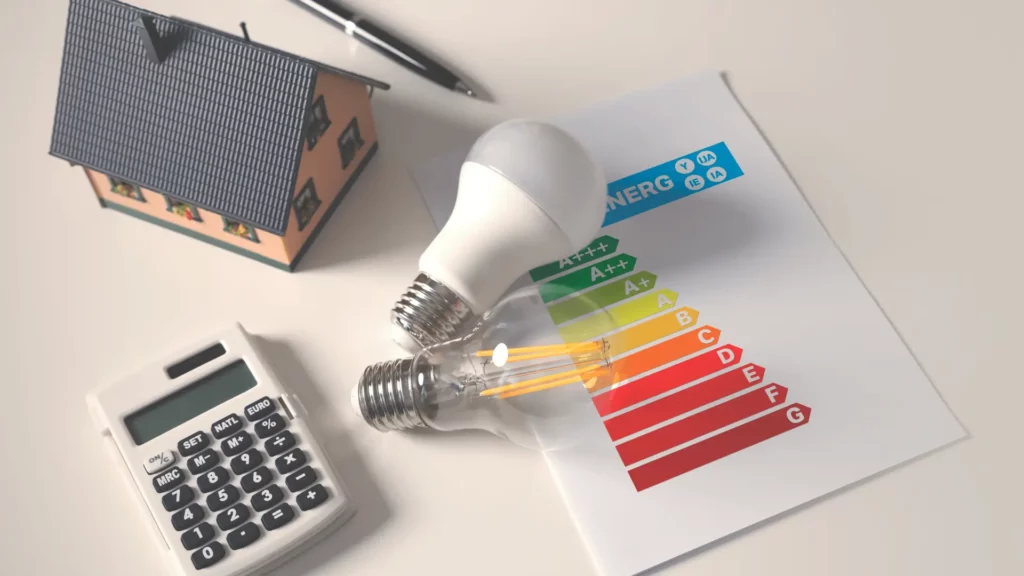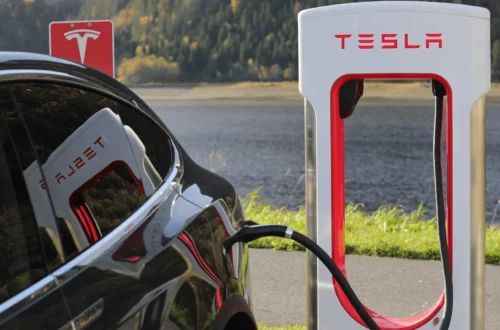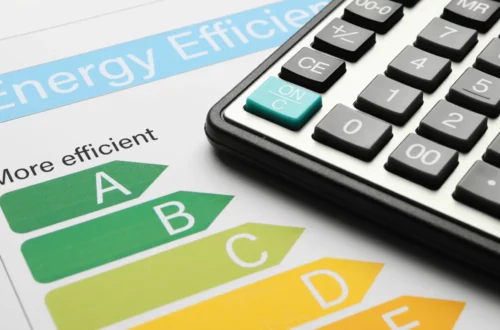Upgrade Your Home’s Energy Efficiency with These 12 Easy Steps

Improving the energy efficiency of your home not only helps to save money on utility bills but also contributes to a more sustainable and eco-friendly lifestyle. By reducing energy consumption, you can minimize your carbon footprint and make a positive impact on the environment.
Taking steps to improve energy efficiency is beneficial for both homeowners and the planet. Lower energy consumption means reduced utility expenses, allowing you to save money in the long run. Additionally, by decreasing your reliance on non-renewable energy sources, you contribute to the overall conservation of resources.
Reducing energy consumption also helps to combat climate change. The less energy we consume, the fewer greenhouse gas emissions are released into the atmosphere. By implementing energy-saving measures, you are actively participating in the global effort to mitigate the effects of climate change.
It’s important to be aware of the impact our daily habits have on energy consumption. Making small changes, such as turning off lights when not in use, using energy-efficient appliances, and properly insulating our homes, can make a significant difference.
In the following sections, we’ll explore practical and cost-effective ways to improve energy efficiency and reduce utility expenses in your home. From optimizing your furnace and insulating your water heater to sealing ductwork and utilizing ceiling fans, these tips will help you create a more energy-efficient living environment. So let’s dive in and discover how you can upgrade your home’s energy efficiency with these 12 easy steps.
Care for Your Furnace to Boost Energy Efficiency
To maximize energy efficiency, it’s important to properly maintain and optimize your furnace. Here are some tips:
1. Schedule an annual servicing: Regular maintenance can ensure your furnace operates at peak performance and efficiency.
2. Replace air filters: Clean filters promote better airflow and reduce strain on the system, resulting in energy savings.
3. Seal ductwork: Inspect and seal any leaks in your ductwork to prevent heat loss and improve overall efficiency.
4. Consider a high-efficiency furnace: Upgrading to a more efficient model can significantly reduce energy consumption and lower utility bills.
5. Optimize thermostat settings: Use programmable thermostats to set lower temperatures when you’re asleep or away, saving energy without sacrificing comfort.
By following these furnace maintenance tips, you can enhance energy efficiency in your home and reduce your environmental impact.
Insulate Your Water Heater
Insulating your water heater is a simple and effective way to reduce heat loss and save energy. By wrapping the heater with an insulating blanket, you can prevent heat from escaping and improve its overall efficiency. This helps to lower your energy consumption and save money on utility bills. Follow these instructions to insulate your water heater and start reaping the benefits of improved energy efficiency:
1. Measure the dimensions of your water heater to determine the size of the insulating blanket required.
2. Purchase an insulating blanket from a hardware store or online retailer. Ensure it has an R-value of at least R-8 for optimal insulation.
3. Turn off the water heater and allow it to cool down before beginning the insulation process. This prevents any potential injuries from hot surfaces.
4. Carefully wrap the insulating blanket around the water heater, ensuring that it covers all exposed surfaces. Use adhesive tape or straps to secure the blanket in place.
5. Pay special attention to insulating the top of the water heater, as heat loss is most significant from this area.
6. Avoid covering the thermostat or control panel of the water heater. This allows for easy access and maintenance.
7. Once the insulation is applied, turn the water heater back on and monitor its performance to ensure it functions properly.
8. Regularly check the blanket for signs of wear or damage, and replace it if necessary.
By insulating your water heater, you can significantly reduce heat loss and improve its energy efficiency. This simple and cost-effective step can make a noticeable difference in your utility bills while also contributing to a more sustainable and environmentally friendly home.
Seal ductwork
Sealing ductwork is a crucial step in improving the energy efficiency of your home. Leaky ducts can lead to significant energy loss and reduced HVAC system efficiency. By preventing air leaks, you can ensure that conditioned air reaches its intended destination, optimizing the performance of your heating and cooling system. Sealing ductwork not only enhances comfort but also reduces energy waste, resulting in potential cost savings on your utility bills.
To effectively seal your ductwork and improve HVAC efficiency:
1. Identify air leaks: Inspect the visible joints and connections of your ductwork for any visible gaps or cracks. Use your hand to feel for any air escaping from the ducts.
2. Apply duct sealant: Use heating-vent tape or mastic sealant to seal the leaks and gaps in the ductwork. Make sure to cover the entire affected area, creating an airtight seal.
3. Insulate ducts: Consider insulating your ductwork to prevent heat loss or gain during the distribution of air. Insulating the ducts in unconditioned areas, such as the attic or basement, helps maintain the temperature of the air as it travels through the system.
By sealing and insulating your ductwork, you can minimize air leaks, prevent heat loss, and ensure that the conditioned air reaches every room in your home efficiently. This simple and cost-effective measure can significantly improve your HVAC system’s performance and contribute to overall energy savings.
Test windows and doors
One of the easiest ways to increase energy efficiency in your home is by checking your windows and doors for drafts. These drafts can cause unnecessary heat loss during the colder months and make your HVAC system work harder to maintain a comfortable temperature. To test for drafts, simply hold a lit incense stick near the window or door frame and observe if the smoke wavers or is pulled towards any visible joints. If you notice any drafts, consider implementing the following solutions:
- Install weatherstripping: Apply weatherstripping around the windows and doors to create an airtight seal and prevent drafts.
- Use caulking: Seal any visible gaps or cracks around window frames and doorframes using caulk.
- Consider exterior window film: Applying an insulating window film can further reduce heat loss and improve energy efficiency.
- Add door sweeps: Install door sweeps at the bottom of exterior doors to prevent drafts from entering.
By testing your windows and doors for drafts, and implementing these simple solutions, you can significantly improve the energy efficiency of your home, reduce heat loss, and save on utility bills.
Also read: Why You Should Consider Solar Energy for Your Home | Advantages of Solar Energy
Use ceiling fans
One simple and effective way to improve energy efficiency in your home is by utilizing ceiling fans. These fans provide numerous benefits, including enhanced air circulation and reduced reliance on air conditioning. By using ceiling fans, you can create a more comfortable indoor environment while minimizing energy consumption.
Here are the key advantages of using ceiling fans:
1. Enhanced air circulation: Ceiling fans help to distribute air throughout a room, keeping it well-ventilated and preventing stagnant air pockets. This improved air circulation promotes a more comfortable living space.
2. Reduced reliance on air conditioning: By using ceiling fans in conjunction with your air conditioner, you can set your thermostat at a higher temperature and still feel cool. This approach reduces the workload on your air conditioning unit and lowers energy consumption.
3. Cost savings: By reducing your reliance on air conditioning, you can save significantly on your energy bills. Ceiling fans consume considerably less energy compared to air conditioners, making them a cost-effective cooling solution.
4. Year-round use: Ceiling fans can also be used during colder months to improve energy efficiency. When set in reverse mode, they help to circulate warm air that rises to the ceiling, distributing it evenly throughout the room and reducing the workload on your heating system.
Remember to adjust the fan’s direction according to the season: counterclockwise for cooling and clockwise for heating. Additionally, turn off the fan when you leave the room to save energy.
By incorporating ceiling fans into your home, you can enhance air circulation, reduce energy consumption, and enjoy the benefits of a more comfortable living environment.
Run Large Appliances During Off-Peak Hours
Running large appliances during off-peak hours can be beneficial, especially if your utility provider offers time-of-use rates. By scheduling your dishwasher, washing machine, and other energy-intensive appliances to run in the evening, you can take advantage of lower electricity costs. This can result in significant savings on your utility bills over time. It’s a simple and effective way to optimize your energy usage and reduce expenses.
Consider setting timers or using smart plugs to automate the operation of these appliances during the designated off-peak hours. Be mindful of the specific time window provided by your utility company for reduced rates. By taking this small step, you can make a big impact on your energy consumption and save money effortlessly.
Remember, it’s important to consult your utility provider or review your electricity plan to identify the specific off-peak hours and time-of-use rates. By aligning the usage of your large appliances with these favorable time periods, you can maximize your savings and contribute to a more energy-efficient home.
Also read: How Renewable Energy is Transforming the Environment: 5 Major Benefits
Install a clothesline
Using a clothesline to dry your clothes instead of relying on a clothes dryer is a simple and effective way to reduce your energy consumption. By harnessing the power of the sun and wind, you can eliminate the energy usage associated with running a dryer. Not only will this help lower your utility bills, but it also reduces your carbon footprint. Hang your laundry on a clothesline and enjoy the fresh scent of sun-dried clothes while helping the environment.
Clean large appliances
Cleaning and maintaining your large appliances is essential for optimal energy efficiency. Here are some tips to keep them running smoothly and minimize energy waste:
1. Refrigerator: Keep the coils at the back clean and dust-free. Dust buildup can strain the compressor and increase energy consumption.
2. Oven: Clean the oven regularly to prevent buildup of grease and residue. A dirty oven can lead to uneven heat distribution and longer cooking times.
3. Dishwasher: Clear out food debris from the filter and spray arms. Clogged filters and arms can reduce the efficiency of your dishwasher.
4. Washing machine: Periodically clean the detergent dispenser and lint filter. Buildup in these areas can affect the washer’s performance and energy usage.
5. Dryer: Clean the lint trap after every load to maintain proper airflow. Clogged lint traps force the dryer to work harder and use more energy.
Regular maintenance and cleaning of your appliances not only improve their energy efficiency but also extend their lifespan. It’s a small effort that can make a big difference in reducing your energy consumption.
Also read: Renewable Energy vs Fossil Fuels: Which One is Better?
Harness Smart Home Automation
Implementing smart home technology and automation can be a game-changer when it comes to regulating energy usage in your house. By utilizing devices like smart thermostats, motion sensors, and programmable switches, you can easily control and optimize energy consumption.
Benefits of smart home automation for energy efficiency
– Energy optimization: Smart home systems allow you to set schedules and automate the operation of various devices, ensuring they operate only when needed, and eliminating unnecessary energy consumption.
– Remote control: With smart home apps, you have control of your home’s energy usage right in the palm of your hand, no matter where you are. This means you can adjust temperature settings, turn off lights, and manage other energy-consuming devices remotely.
– Adaptive features: Smart home technology can learn your habits and adjust settings automatically to minimize energy usage. For example, a smart thermostat can sense when you’re away and adjust the temperature accordingly to save energy.
– Integration with renewable energy: Smart home systems can work seamlessly with renewable energy sources, such as solar panels, to optimize energy consumption and reduce reliance on the grid.
Recommendations for smart home automation
1. Install a smart thermostat: A smart thermostat allows you to program temperature settings based on your daily routine and preferences. It can also adapt to weather conditions and occupancy patterns to maximize energy efficiency.
2. Use smart plugs: Smart plugs enable you to control the power supply to individual devices. You can set schedules or turn off devices remotely to eliminate energy waste from standby power consumption.
3. Incorporate motion sensors: By installing motion sensors, you can automate the operation of lights, allowing them to turn on only when someone is present in the room. This helps prevent unnecessary energy usage.
4. Explore smart lighting solutions: Smart lighting systems offer features like dimming and scheduling, allowing you to customize lighting levels and automatically turn off lights in unoccupied areas.
5. Consider smart appliances: Upgrading to energy-efficient smart appliances ensures that you have full control over their operation and energy usage, optimizing efficiency and reducing utility bills.
Automating your home’s energy usage through smart home technology enables you to effortlessly reduce unnecessary energy consumption and save on utility bills. By incorporating these automated solutions into your household, you can create a more energy-efficient and sustainable living environment.
Also read: The Complete Guide to Powering Your Home with Renewable Energy
Fight phantom power consumption
Phantom power, also known as standby power or vampire power, refers to the energy consumed by electronic devices even when they are turned off or in standby mode. It may seem insignificant, but over time, phantom power can contribute significantly to your energy bills.
To minimize standby power consumption and save energy, here are some strategies you can implement:
1. Unplug electronic device chargers when not in use: chargers continue to consume small amounts of power even when not connected to devices. Unplugging them when not in use can help reduce unnecessary energy drain.
2. Use power strips: plug multiple devices into a power strip and switch it off when you’re not using them. This cuts off the power supply completely and prevents standby power consumption.
3. Utilize smart power strips: these power strips have built-in timers or occupancy sensors that automatically cut off power when devices are not in use. They are an excellent option for reducing phantom power.
4. Opt for energy-efficient electronics: when purchasing new devices, look for energy-efficient models. These devices are designed to consume less power, even during standby mode.
5. Check energy-saving settings: most electronic devices have energy-saving settings that allow you to enable power-saving modes or set timers for automatic shut-off. Adjusting these settings can significantly reduce standby power consumption.
By implementing these strategies and being mindful of phantom power consumption, you can minimize energy waste and lower your utility bills.
Unplug Chargers When Not in Use
Unplugging electronic device chargers when not in use is a simple yet effective way to prevent unnecessary energy drain. Chargers left plugged in continue to draw power even if the device is not connected. By making it a habit to unplug chargers when they are not actively charging a device, you can reduce standby power consumption and save energy. Remember, even though it may seem small, every little step counts when it comes to energy conservation.
Also read: Top Renewable Energy Sources for a Better Future
Invest in an Energy Audit
Conducting a home energy audit is a crucial step in maximizing your home’s energy efficiency. By assessing your energy consumption and identifying areas for improvement, you can significantly reduce your utility bills and environmental impact. Benefits of investing in an energy audit include:
1. Energy Savings: An energy audit pinpoints areas where energy is being wasted, allowing you to make targeted improvements that will result in substantial energy savings.
2. Increased Comfort: Discovering and addressing air leaks, insulation gaps, and other sources of inefficiency will help maintain a consistent and comfortable indoor temperature year-round.
3. Cost-Effective Solutions: An energy audit provides specific recommendations for cost-effective upgrades and improvements, allowing you to prioritize investments based on their potential return on investment.
4. Optimal Equipment Performance: By assessing the performance of your heating, ventilation, and air conditioning systems, an energy audit ensures they are functioning efficiently, prolonging their lifespan and reducing the need for repairs.
5. Environmental Impact: By reducing your energy consumption, you contribute to a greener future, minimizing greenhouse gas emissions and preserving natural resources.
6. Health and Safety: An energy audit also identifies potential health and safety issues, such as carbon monoxide leaks, inadequate ventilation, or mold growth, allowing you to address these concerns promptly.
An energy audit is a valuable tool in optimizing your home’s energy efficiency. By understanding your home’s energy consumption patterns and implementing the recommended improvements, you can create a more sustainable and comfortable living environment while enjoying significant financial savings.





